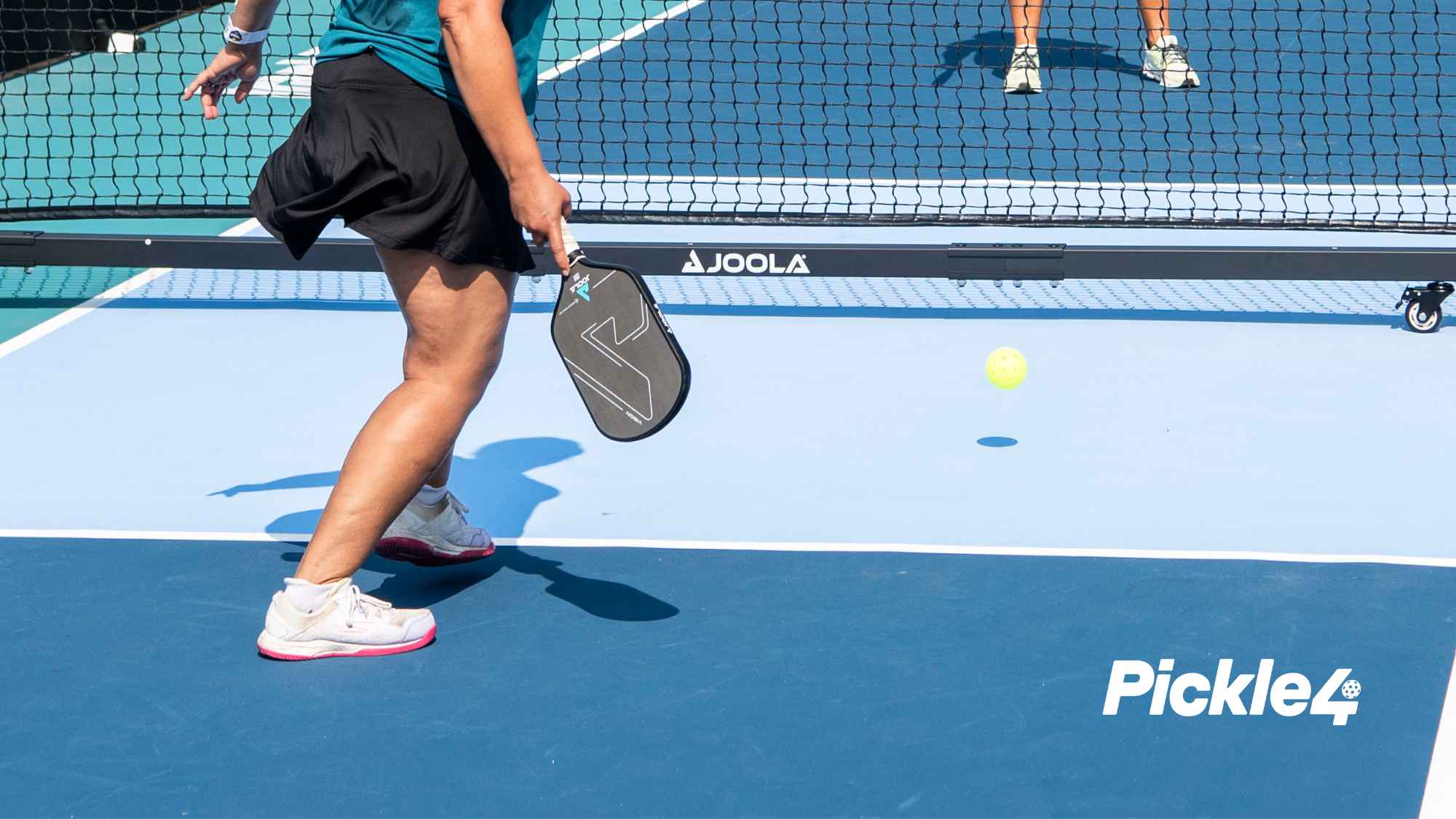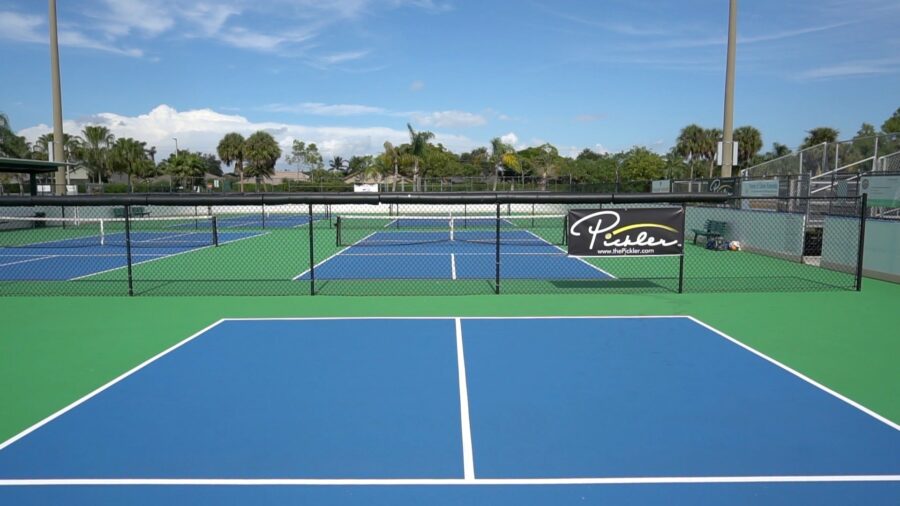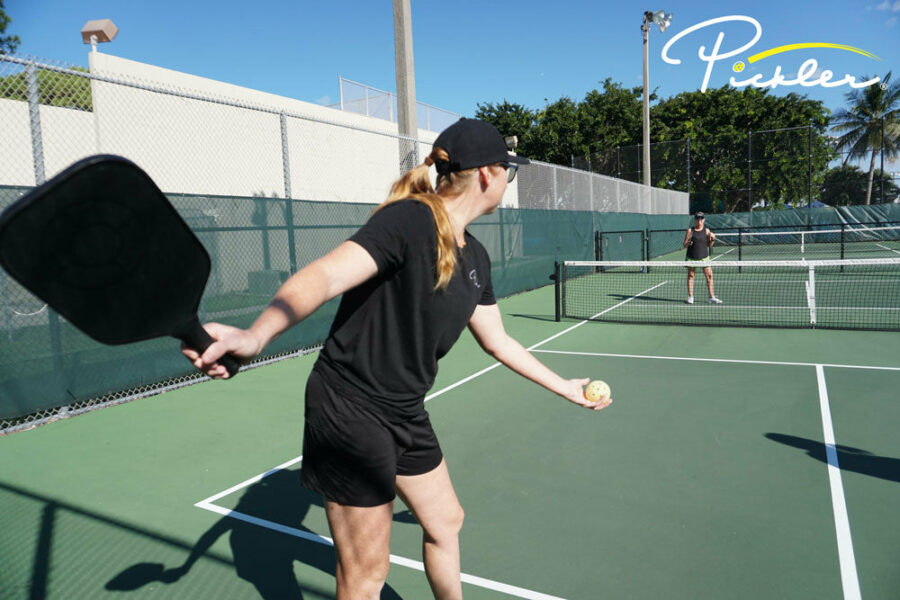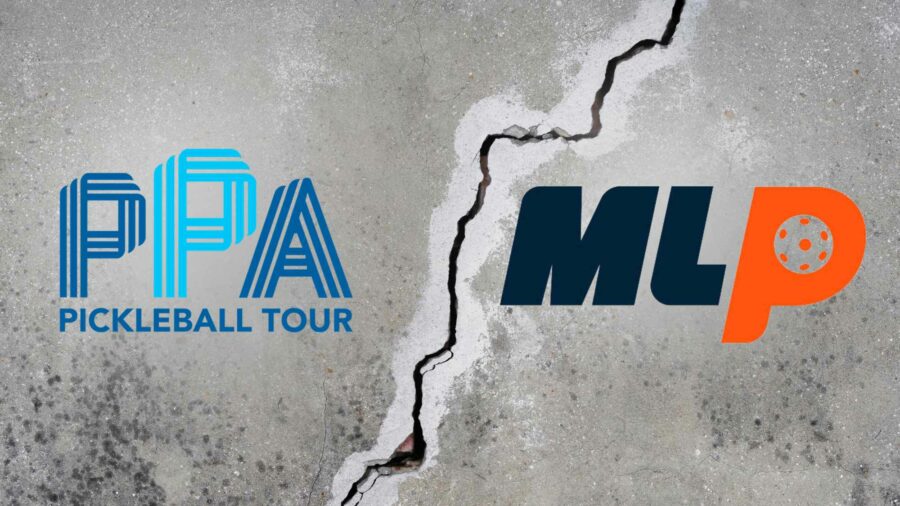As you may know, one of the cornerstone rules of the sport of pickleball is that you may not volley the pickleball while making contact with the Kitchen (also known as the Non-Volley Zone) or the Kitchen line. A volley is a shot in pickleball where you hit the pickleball out of the air, without the pickleball bouncing. You may only volley the pickleball outside of the Non-Volley Zone. Hence, the appropriate name of the Non-Volley Zone.
The key is whether the player in the act of volleying the pickleball (again, hitting the pickleball out of the air, without the pickleball bouncing) is touching the Non-Volley Zone (or touching anything that has contact with the Non-Volley Zone) at any point during the act of volleying the pickleball. If so, then the player would have committed a fault and will lose the rally.
There are a number of ways that you can make contact with the Non-Volley Zone during the act of hitting a volley. These include:
- Stepping on or standing in the Kitchen (including stepping or standing on the Kitchen line) during the act of hitting a volley;
- Making contact with anyone or anything that is touching the Kitchen (for instance, making contact with your partner who is standing in the Non-Volley Zone) during the act of hitting a volley;
- Dropping your paddle, hat, sunglasses, or other article into the Non-Volley Zone during the act of hitting a volley (for instance, you hit a volley and drop your paddle or your hat into the Kitchen);
- Touching the Kitchen with your paddle during your volley motion, either before or after making contact with the pickleball (for instance, you hit a volley and follow-through your swing so that your paddle grazes the Kitchen line); or
- Allowing your momentum to carry you into the Non-Volley Zone after you hit the pickleball outside of the Non-Volley Zone. For example, it is a fault if you run to the Non-Volley Zone line, strike a volley outside of the Non-Volley Zone, and then your momentum causes you to step into the Non-Volley Zone.
In summary, the rule—at its most basic level—is very simple and clear: No volleys are allowed in the Kitchen. Enforcing the rule is more difficult. For instance, check out this point during the Pro Mixed Doubles Final of the PPA Tour’s Cincinnati Open.
Pro player Thomas Wilson volleys a pickleball and is called for a foot fault. However, could you argue that his foot never actually touched the Kitchen line, as his toes were curled back at the front of his shoes (e.g., like an elf)?
If you look closely, it appears that Wilson’s feet are positioned so close to the Kitchen that they may appear as if they are touching the Kitchen line. However, in this case, he also has a slightly curled back toe spring (e.g., think an elf shoe), where his toes are actually curled or ever so slightly lifted above the Kitchen line, meaning that Wilson may not have committed a foot fault. If this is accurate—in other words, if Wilson’s toes are above the Kitchen line without actually touching it, then it is not a foot fault (and instead is court positioning pickleball players can only dream of). We propose calling this level of precision in court positioning the “elf toe” because of the tiny margin between a legal play and a fault. Unfortunately, however, for Wilson, his court positioning was not precise enough.




